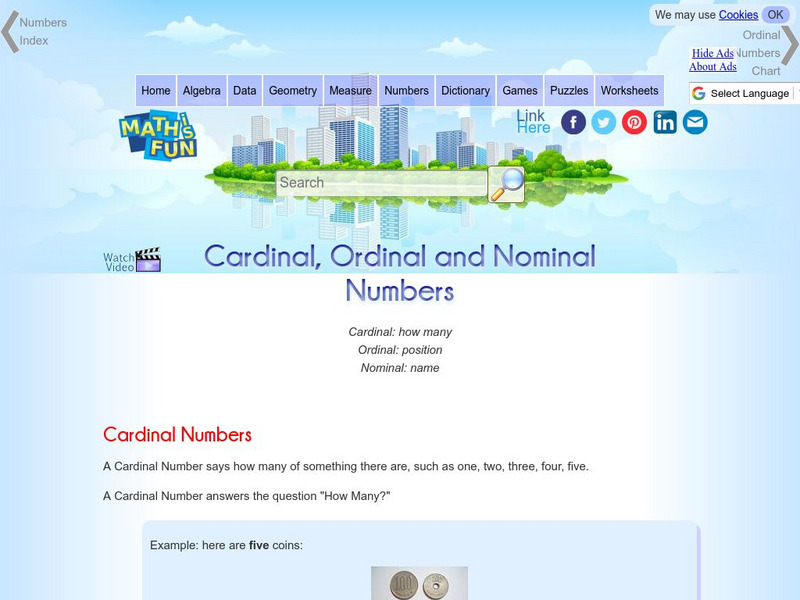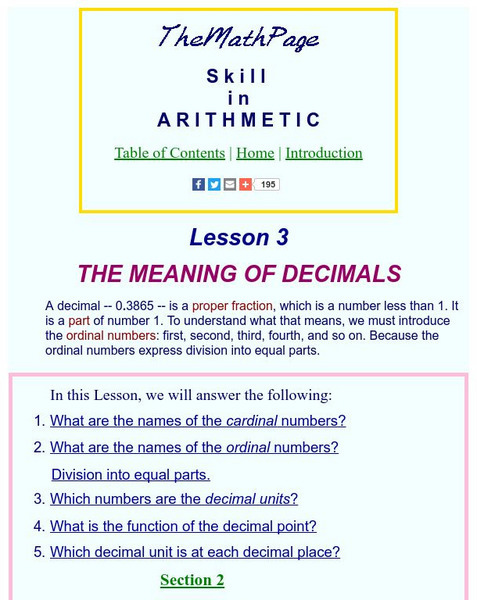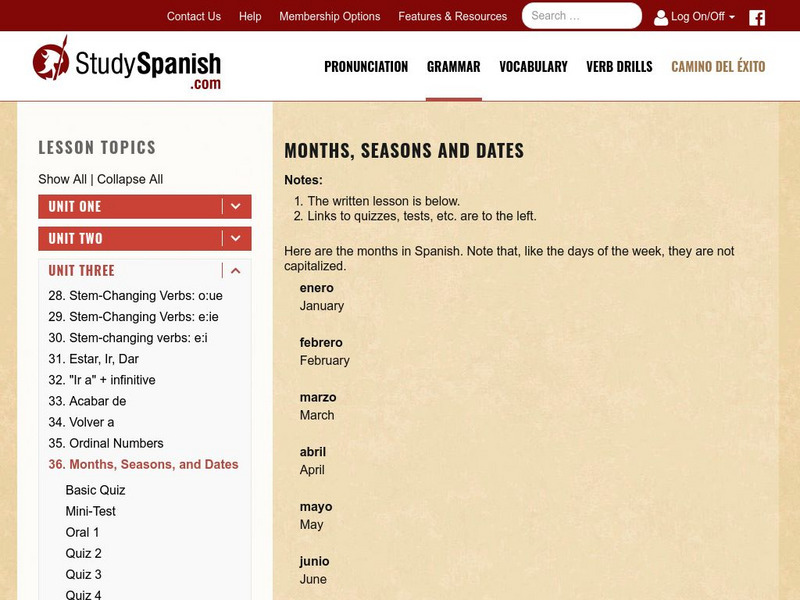Math Is Fun
Math Is Fun: Cardinal, Ordinal and Nominal Numbers
Explains, with examples, what cardinal, ordinal, and nominal numbers are and how to remember which is which. Includes a set of practice questions.
Cuemath
Cuemath: Ordinal Numbers
This article explains ordinal numbers and the difference between cardinal numbers and ordinal numbers. Included are solved examples and interactive problems for review.
Charles I. Kelly and Lawrence E. Kelly
Many things.org: Match Word for English Study: Cardinal and Ordinal Numbers
Concentration game helps students practice matching cardinal and ordinal number names.
Cuemath
Cuemath: Cardinal Numbers
A comprehensive guide for learning all about cardinal numbers with definitions, solved examples, and practice questions.
Charles I. Kelly and Lawrence E. Kelly
Many things.org: Jig Word for English Study: Cardinal and Ordinal Numbers
Interactive matching game helps students identify cardinal and corresponding ordinal numbers.
Math Is Fun
Math Is Fun: Definition of Cardinal Number
Definition of a cardinal number. Click "here's more" to learn more about cardinal, ordinal and nominal numbers.
ClassFlow
Class Flow: Get in Line
[Free Registration/Login Required] Students will learn the difference between ordinal and cardinal numbers. Students will name the order of objects as well as place objects in the correct order. This lesson could be used as an...
ClassFlow
Class Flow: German Numbers
[Free Registration/Login Required] The numbers 0-1000 are taught, as well as the difference between cardinal and ordinal numbers, and the use of commas and periods with numbers.
Lawrence Hall of Science
The Math Page: Skill in Arithmetic: The Meaning of Decimals
This website from The Math Page explains and defines decimals.
Study Languages
Study Spanish: Months, Seasons, and Dates
This online lesson is on the use of definite articles and numbers with months, seasons, and dates. A quiz follows the lesson to test the student's comprehension of this grammar principle.
Other
Ancient Greek Number Codes
Credited to the Cornell University Greek Epigraphy Project, the content on this page explains (and illustrates through a chart) the Greek use of Alpha characters for numbers.






